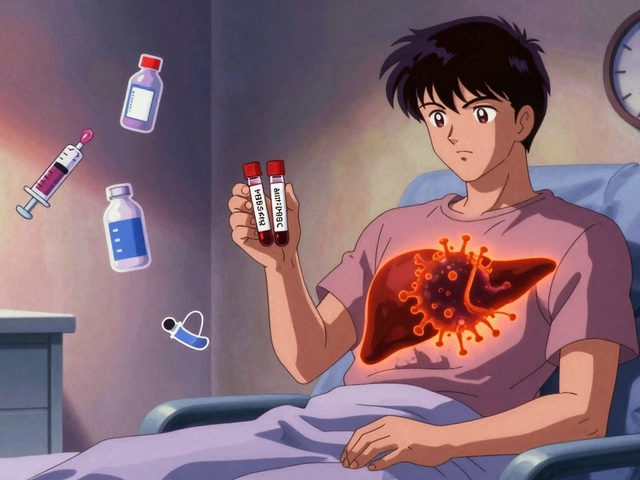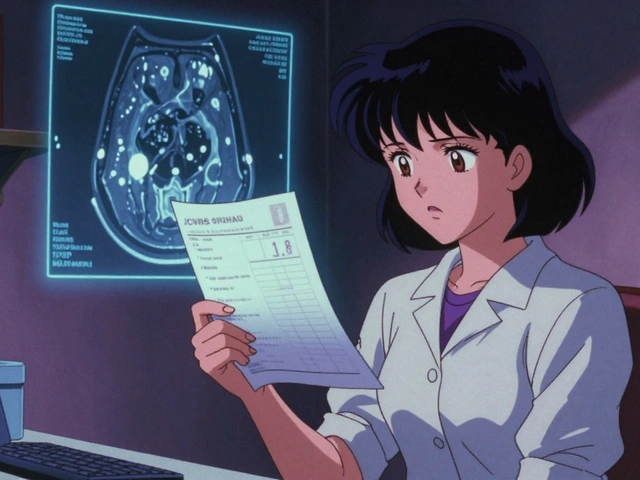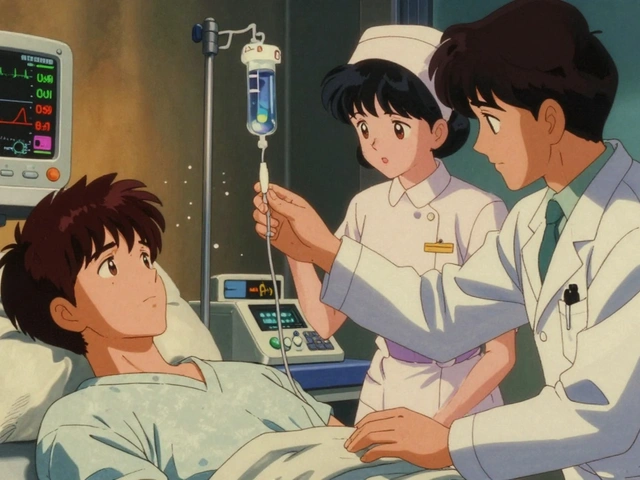When someone gets an organ transplant, their body sees the new organ as a threat. To stop rejection, doctors give them powerful drugs that weaken the immune system. But this protection comes with a dangerous side effect: a much higher risk of life-threatening fungal infections. Among these, voriconazole has become one of the most important tools doctors use to fight back.
Why Organ Transplant Patients Are at High Risk for Fungal Infections
After a transplant, patients take immunosuppressants like tacrolimus or cyclosporine for life. These drugs stop the immune system from attacking the new organ-but they also leave the body defenseless against fungi that normally don’t cause trouble. The most common dangerous fungi are Aspergillus and Candida. Aspergillus spores are everywhere-in soil, decaying leaves, even air conditioning systems. In a healthy person, the immune system swats them away. In a transplant patient, they can grow into invasive lung infections or spread to the brain, eyes, or skin.
Studies show that up to 20% of lung transplant recipients develop invasive aspergillosis within the first year. For liver and heart transplant patients, the risk is lower but still significant. These infections kill nearly half of untreated patients. That’s why prevention and early treatment aren’t optional-they’re essential.
What Voriconazole Is and How It Works
Voriconazole is an antifungal drug that belongs to a class called triazoles. It was approved by the FDA in 2002 and quickly became a first-line choice for invasive fungal infections in immunocompromised patients. Unlike older drugs like amphotericin B-which can damage kidneys and cause severe chills-voriconazole targets fungi more precisely.
It works by blocking a key enzyme fungi need to build their cell walls. Without that wall, the fungus falls apart. It’s effective against Aspergillus, Candida, Fusarium, and several other hard-to-treat species. What makes voriconazole especially useful is that it works well in the lungs, brain, and eyes-places where infections often hide and spread.
It comes in two forms: oral tablets and intravenous (IV) solution. Many patients start with IV treatment in the hospital, then switch to pills once they’re stable. This flexibility helps with long-term care.
When Doctors Choose Voriconazole Over Other Antifungals
Not all antifungals are the same. Before voriconazole, amphotericin B was the go-to. But it’s toxic. Fluconazole is safer but doesn’t work against Aspergillus. Posaconazole and isavuconazole are newer options, but voriconazole still leads in several key areas.
For invasive aspergillosis, clinical trials show voriconazole improves survival rates by 30% compared to amphotericin B. It also penetrates tissues better and has fewer immediate side effects. In liver transplant patients, where drug interactions are common, voriconazole’s profile is often preferred because its metabolism is predictable once dosing is stabilized.
That said, voriconazole isn’t always the best choice. If a patient has severe liver damage, doctors might avoid it. If the infection is caused by a rare fungus like Mucor, they’ll pick a different drug. But for most transplant patients with suspected or confirmed aspergillosis, voriconazole is still the starting point.
Dosing, Monitoring, and Common Side Effects
Voriconazole isn’t a one-size-fits-all drug. Dosing depends on weight, age, liver function, and what other medications the patient is taking. A typical adult dose is 6 mg per kg of body weight every 12 hours for the first 24 hours, then 4 mg per kg twice daily. But because it’s broken down by the liver, levels can vary wildly between patients.
This is why therapeutic drug monitoring (TDM) is standard practice. Doctors regularly check blood levels of voriconazole to make sure they’re between 1 and 5.5 mcg/mL. Too low, and the infection won’t be controlled. Too high, and side effects become dangerous.
Common side effects include vision changes-blurred vision, sensitivity to light, or seeing blue-green tints. These usually last only 30 minutes after a dose and go away over time. Less common but serious issues include liver enzyme spikes, skin rashes, and sun sensitivity. Patients are told to avoid direct sunlight and wear sunscreen, even on cloudy days.
Drug Interactions That Can Be Deadly
One of the biggest challenges with voriconazole is how it interacts with transplant medications. It blocks the liver enzyme CYP3A4, which breaks down tacrolimus, cyclosporine, and sirolimus. If you give voriconazole without adjusting those drugs, their levels can spike-leading to kidney failure, nerve damage, or seizures.
That’s why every transplant center has a strict protocol. When voriconazole starts, tacrolimus doses are cut by 50% or more. Blood levels are checked every day for the first week, then every few days until stable. Sometimes, doctors switch to cyclosporine temporarily if interactions get too complex.
Other drugs that interact badly include statins, certain antibiotics, and even some heart medications. Pharmacists play a key role in catching these risks before they become emergencies.
Real-World Outcomes: What Success Looks Like
At major transplant centers, success isn’t just about survival-it’s about returning to normal life. A 2023 study from the European Society for Clinical Microbiology followed 412 transplant patients treated with voriconazole for invasive aspergillosis. The 12-week survival rate was 71%. For those who started treatment early-within 48 hours of symptoms-the rate jumped to 82%.
Patients who survived often went back to work, traveled, and spent time with family. One lung transplant recipient from Toronto, now five years post-treatment, says, “I thought I’d be stuck in the hospital forever. Voriconazole gave me back my life.”
But success also means catching infections early. Many centers now use regular CT scans and blood tests (like the galactomannan test) to screen high-risk patients-even before symptoms appear. This proactive approach cuts mortality in half.
What Comes After Voriconazole?
Voriconazole isn’t perfect. Some fungi are becoming resistant. Others don’t respond at all. Newer drugs like isavuconazole are being used more often, especially in patients who can’t tolerate voriconazole’s side effects. But voriconazole remains the most studied, most proven option for transplant patients.
Research is ongoing. Scientists are testing combination therapies-like voriconazole with echinocandins-to boost effectiveness. Others are developing faster diagnostic tools so treatment can start sooner. For now, though, voriconazole is still the backbone of antifungal care in transplant medicine.
Key Takeaways
- Voriconazole is the top choice for treating invasive fungal infections like aspergillosis in organ transplant patients.
- It works better and is safer than older antifungals like amphotericin B.
- Drug interactions with immunosuppressants like tacrolimus are common and dangerous-dosing must be closely monitored.
- Therapeutic drug monitoring is essential to keep levels in the safe, effective range.
- Early treatment saves lives: starting voriconazole within 48 hours of symptoms improves survival by up to 30%.
Can voriconazole be used to prevent fungal infections before they start?
Yes, in high-risk patients-like lung transplant recipients with prolonged ventilation or those who’ve had prior fungal infections-doctors sometimes use voriconazole as prophylaxis. This means giving it daily to stop an infection before it begins. Studies show this reduces the chance of invasive aspergillosis by about 50%. But it’s not used for everyone because of cost and side effects. It’s reserved for those with the highest risk.
How long do patients typically take voriconazole?
It depends on the infection. For treatment of active disease, patients usually take it for at least 6 to 12 weeks. In some cases, especially if the infection spread to bones or the brain, treatment lasts six months or longer. For prevention, it’s often given for 3 to 6 months after transplant. The goal is to keep the immune system strong enough to fight off fungi on its own before stopping the drug.
Is voriconazole safe for children who get organ transplants?
Yes, but dosing is more complex. Children metabolize voriconazole faster than adults, so they often need higher doses per kilogram. Pediatric guidelines recommend weight-based dosing and frequent blood level checks. Side effects like vision changes and skin sensitivity still occur but are manageable with monitoring. It’s approved for use in children as young as 2 years old for invasive fungal infections.
What happens if voriconazole doesn’t work?
If the infection doesn’t improve after 5-7 days, doctors look for resistance or misdiagnosis. They might switch to isavuconazole, liposomal amphotericin B, or echinocandins. In severe cases, surgery to remove infected tissue (like part of the lung) may be needed. Combination therapy is also being tested in resistant cases. The key is acting fast-delaying treatment lowers survival chances dramatically.
Can I take over-the-counter antifungals instead of voriconazole?
No. Over-the-counter antifungals like clotrimazole or miconazole only work on skin or nail infections. They don’t reach deep tissues or blood where transplant patients get dangerous infections. Using them instead of prescribed antifungals could be fatal. Always follow your transplant team’s instructions exactly.





12 Comments
Wow, this is actually one of the clearest explanations I’ve read on transplant antifungals. I work in hospice care and see so many families terrified of these infections - this helps explain why voriconazole is such a lifeline. Thanks for writing it.
As a British medical professional with over 20 years’ experience in immunology, I must point out that the assertion regarding voriconazole’s superiority over amphotericin B is only true in Western European and North American cohorts. In the Global South, where resistance patterns differ and cost is a factor, liposomal amphotericin remains the gold standard. This article reads like an American pharmaceutical advertisement.
so like… you’re telling me i can’t just take some monistat and call it a day? 😂 i mean, come on. we’re talking about a pill that turns your vision blue??? sounds like a bad acid trip with extra steps.
Blue vision? That’s the side effect? Cool. I’d pay to see that.
Irish transplant units have been using voriconazole prophylaxis since 2015 with remarkable success - especially in lung recipients with bronchiolitis obliterans syndrome. The 50% reduction in aspergillosis isn’t just a number - it’s people going back to their jobs, their kids, their gardens. This drug is a quiet hero.
Let’s be real - voriconazole is basically the superhero of antifungals, but it’s got a serious kryptonite: tacrolimus. I’ve seen nurses scramble to adjust doses like they’re playing Jenga with someone’s kidneys. One wrong move and boom - acute renal failure. The monitoring protocol isn’t just ‘best practice’ - it’s survival chess. And yeah, the blue vision? Totally worth it if you’re not dead in 3 weeks. Still, I’d take the trippy goggles over a funeral any day.
Everyone acts like voriconazole is this miracle drug but have you looked at the cost? $2,000 a month for a 70kg adult? And don’t even get me started on the TDM blood draws - every few days, like clockwork. My cousin got a liver transplant and spent more on antifungals than on rent for six months. This isn’t medicine - it’s a luxury subscription service with side effects.
It’s fascinating how voriconazole’s pharmacokinetics vary so widely across ethnic populations. Studies from Japan show faster clearance rates in East Asian patients, necessitating higher dosing. This highlights a critical gap in global clinical guidelines - most dosing protocols are based on Caucasian phenotypes. A more inclusive approach to pharmacogenomics is long overdue.
I lost my brother to invasive aspergillosis two weeks after his lung transplant. They started him on amphotericin - he couldn’t even keep water down from the chills. By the time they switched to voriconazole… it was too late. I wish someone had told us then what this post explains now. If you’re reading this and you’re a transplant patient - don’t wait for symptoms. Ask for screening. Ask for TDM. Fight for your life - because this drug? It doesn’t just treat. It gives you back your tomorrow.
Let me tell you - voriconazole isn’t just a drug, it’s a dance. You’ve got tacrolimus pirouetting on one side, your liver sweating on the other, and your vision doing the Macarena in between. But here’s the kicker: when it works? You’re not just surviving - you’re dancing again. I’ve seen it. A 12-year-old girl, post-heart transplant, back on her bike, laughing as the sun hits her face. That’s the magic. It’s not just science - it’s second chances wrapped in a pill. And yeah, the blue tint? That’s just your soul seeing the world in a new, weird, beautiful way.
Therapeutic drug monitoring is non-negotiable - period. I’ve seen patients get sent home with the wrong dose because the pharmacy didn’t flag the tacrolimus interaction. One guy ended up in the ICU with neurotoxicity. Don’t assume your doctor knows everything - ask for your voriconazole levels. Print out the target range (1–5.5 mcg/mL) and bring it to your appointment. Be your own advocate. You’re not just a patient - you’re the captain of this ship.
voriconazole is a government psyop to make you dependent on big pharma… they made the fungus worse on purpose so they could sell you this overpriced pill… the blue vision? That’s not a side effect - that’s a tracking chip in your eyeballs… they’ve been doing this since the 70s… your transplant center is just a front for the shadow health cartel… also i think the FDA is run by aliens